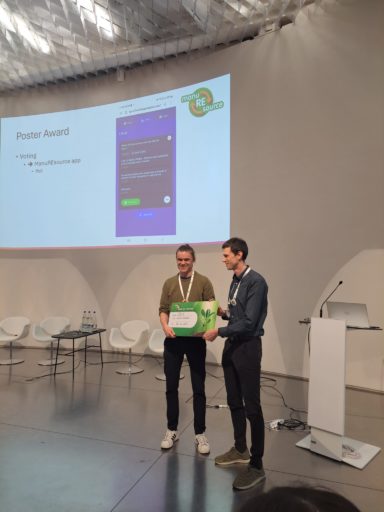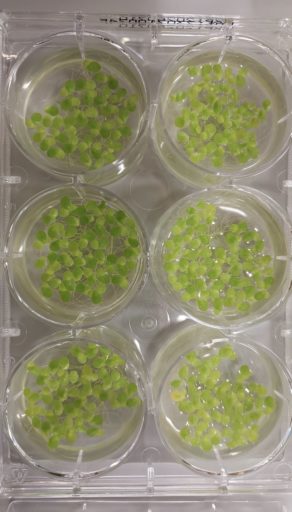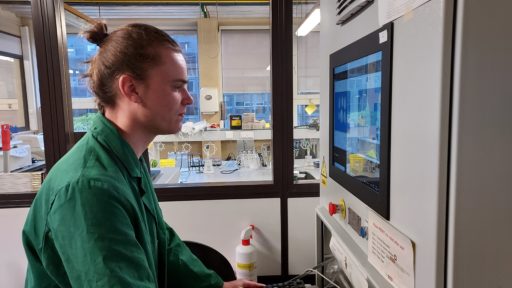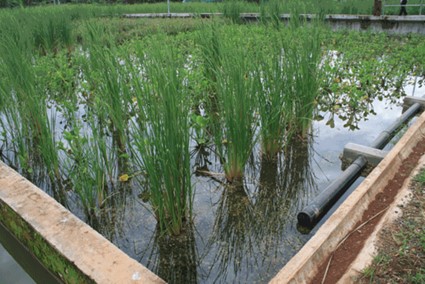28/03/2024
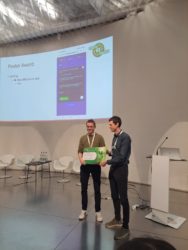
On 21 March 2024, Belgian PhD student Lukas Audenaert won the poster award at the ManuResource Conference in Antwerp.
As part of Work Package 4 of the NutriBudget project, Lukas seeks to investigate the optimisation of the nutrient recovery from the liquid fraction of pig manure at local agriculture. How? by applying a consecutive concept of a duckweed pond and constructed wetland as a nature-based solution.
The experimental set-up can be divided into 3 parts.
After a solid/liquid separation, a stripping-scrubbing installation will result in a lower nitrogen concentration and increased nitrogen recovery. Thanks to this, the emission of greenhouse gasses, like nitrous oxide, are reduced.
Next, the stripping/scrubbing effluent will be fed to a duckweed pond. Duckweed is a protein-rich, fast growing macrophyte, which has been proven to be an excellent nutrient accumulator. In addition to this, duckweed can grow on highly concentrated wastewater.
After this phytoremediation, the nutrient-rich duckweed might serve as a feed source in order to achieve the principles of circular economy.
Nevertheless, duckweed has a disadvantage as it cannot achieve a dischargeable effluent. Therefore, a constructed wetland will be placed downstream of the duckweed pond. A constructed wetland is an engineered system, planted with Phragmites australis (common reed), to remove the remaining nutrients via natural processes. This effluent will meet the discharge criteria.
The main focus of this research will be on the recovery of copper, zinc, potassium, and sulphur as they are added in high amounts in pig feed due to their low accumulation rate in pig bodies.
